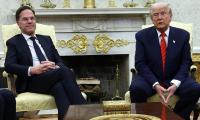From being a haphazard and sporadic activity, the phenomenon of fake news has been organized into a systematic campaign with an express aim to erode facts, undermine the truth and weaken people’s confidence. Driving this phenomenon is the unbelievable expansion of the media landscape in recent decades, propelled by the mind-blowing explosion in the field of information and communication technologies (ICTs).
The strides that the ICTs have made have broken the monopoly on news production and dissemination by providing unhindered access to people through open-source processes and tools. The democratization of the internet, coupled with easy availability of gadgets such as smartphones, has allowed people to report what they see, and stream their activities online at an incredible ease, requiring only the basic-level use of these gadgets. Media scholars have called this increasing engagement of common folks with media as ‘citizen journalism.’
However, this open-source access to media platforms has come at a cost. The practice of deploying these platforms as instruments of spreading particular points of view has become quite entrenched worldwide. So much so that special funds are allocated for amplifying the ‘message’ and digital media specialists are hired, often at exorbitant salary packages, to advise governments, and private-sector companies on getting a wider traction for their ‘brands.’
This explains why campaigns and trends are launched most innovatively on social media platforms with a view to projecting a particular opinion and denouncing those that are opposed to it. The traditional means of communication have increasingly been overtaken by this ‘new media’, paving the way for the emergence of social media companies out to offer their services to the highest bidder.
The whole enterprise has been perfected into an art form marked by pre-campaign due diligence, identification of target audience, sharpening of messages and feedback loops to verify the effectiveness of the campaigns.
The multiplicity of media outlets means that the information overload is so endemic that it is nearly impossible for people to sift fact from fiction. The deepening polarisation that has emerged as the besetting sin of our times has helped the process of fake news become omnipresent and further harden the positions already taken.
The dangers of disinformation have been accentuated by what scholars have termed as a ‘post-truth’ era, a phenomenon that denotes “circumstances in which objective facts are less influential in shaping public opinion than appeals to emotions and personal belief.” It is not the objective understanding of reality but its subjective and personalized interpretation that matters. Opinions rather than facts get masqueraded as the ‘truth’, cancelling out all other alternative versions that may seek to challenge this subjectivity.
Polarisation that is all encompassing in nature has sucked the space for objectivity. People believe in what accords with their preconceived notions and anything contrary is dismissed summarily as ‘untruth’ and ‘propaganda’.
The propensity to accept what resonates with one’s held opinions is gauged by a reference to a ‘Pizzagate’ conspiracy that got traction on Twitter. According to the story, it was alleged that sexually abused children were kept at a Washington-based pizza parlour, named Comet Ping pong and that Hillary Clinton was in the know of the incident.
The story ‘inspired’ Edger Welsh from North Carolina to travel to DC with an assault weapon to free the children. Upon being arrested, he told the police that he had read online “that the Comet restaurant was harboring child sex slaves and that he wanted to see for himself if they were there.”
Likewise, the role of fake news in altering opinions and managing perceptions is best illustrated in an earth-shaking major controversy surrounding the 2016 US elections. The Russian ‘intervention’ in the American elections led to a special investigation by Special Counsel Robert Mueller. The 448-page report, consisting of two volumes, created a lot of high drama and kept Twitter-obsessed Trump on his toes.
The events leading up to the mob’s attack on the US Congress on January 6, as it was busy ratifying the votes of the Electoral College, were largely shaped by the populist line of thinking that claimed that the elections were stolen and the whole process was rigged. A major chunk of Americans actually believed in the veracity of what they were fed by Trump and those supporting his brand of politics.
Trump’s shenanigans forced Twitter to tag his posts with advice to the users to take the claims with a pinch of salt. The damage wrought by fake news does not just undermine the social cohesion but more importantly eats into the vitals of democracy as well.
For many consumers of the news not well equipped with the ability to see past the glittering headlines and flashing news, it is not possible to distinguish between fake and real news. Trends endorsed by credible sources have greater potential to mislead and shape biased views.
While the world struggles with the fake news culture, no template of policy actions has still been found to be effective in stemming this rising trend in various contexts. Punitive legislative and administrative measures, which are easy to adopt, have fallen short of addressing the challenge. Stringent regulatory frameworks have resulted in further curtailing media freedoms, thus adversely impacting the quality of democracy globally.
A report titled ‘How to combat fake news and disinformation’, authored by Darren M West for Brookings Institute, recommended a set of actions to be performed by all stakeholders – government authorities, media industry and technology companies.
The report recommends that governments around the world “encourage independent, professional journalism’ in a bid to make sense of the “mega-changes” that mark the functioning of our world. It says that people are justified in looking up to reporters to unpack the “changing nature of social, economic and political events” for them, which in turn requires the media to be independent of the government authorities.
The report holds that the media industry would do well to continue to “focus high-quality journalism that builds trust and attracts greater audiences.” It says that when people place a higher level of confidence in the integrity of journalists and media outlets, it narrows space for organized disinformation.
The report urges media organizations to “call out fake news and disinformation” by employing the services of in-house professionals and fact-checkers. They should guide their readers about the sources through which fake news is spread through an elaborate and fact-based analysis of the stories and opinion pieces. One way of doing it is to “crowdsource” the fact-checking by encouraging readers to analyse the content and share their opinions.
The report asks the technology platforms to invest in technology to detect fake news. This, the report says, can be done via algorithms and by automating them into the digital platforms for identification of disinformation.
Furthermore, tech firms should ensure greater online transparency and accountability by which users are required to feed real information in order to be able to use the digital services. Such a process will stop the creation of fake accounts and hold the users responsible for what they post online.
The drafters of fake news and the drivers of disinformation campaigns indulge in such practices with an ulterior motive, money being one of the prime motivations. Digital companies should make it harder for these dodgy websites to monetize their lies, half-truths and propaganda.
Last but not the least, the report makes a strong case for the provision of funds to impart “news literacy” to the users. Such education will raise awareness and enable internet users to learn to differentiate between real and fake news. People can fact-check a news item on their own by following many perspectives.
Fake news is the scourge of our times. It will take a combination of efforts, and above all a stakeholders’ commitment, to deal with it over time.
The writer, a Chevening scholar, studied International Journalism at the University of Sussex.
Email: amanatchpk@gmail.com
Twitter: @Amanat222
People of that time believed that an eclipse was a symbol of displeasure of gods
Vertically speaking, dominance of domestic debt in Pakistan’s debt portfolio is haunting
Loss of biodiversity is stark reminder that urban mismanagement is not just infrastructural failure but ecological...
Strong public warning systems can also help ensure quick evacuations in places prone to fires
PPPs in Pakistan's WASH sector face significant regulatory and policy challenges that hinder their effectiveness
Instead, it would have powerful chairman with three-year term, appointed at prime minister’s discretion







